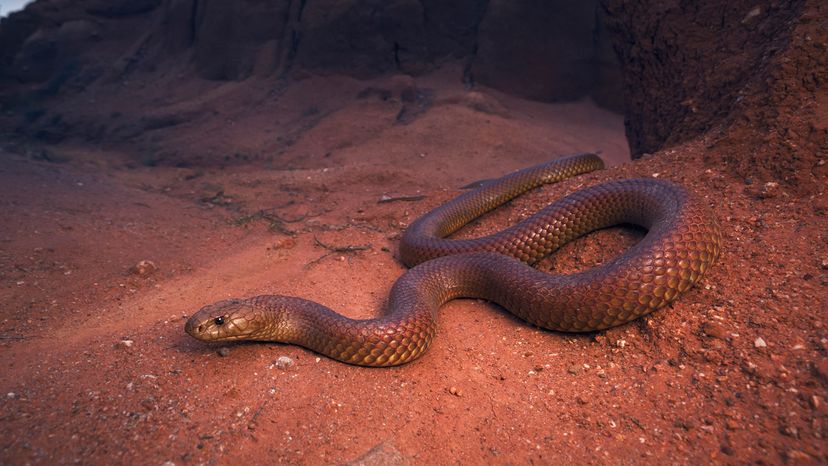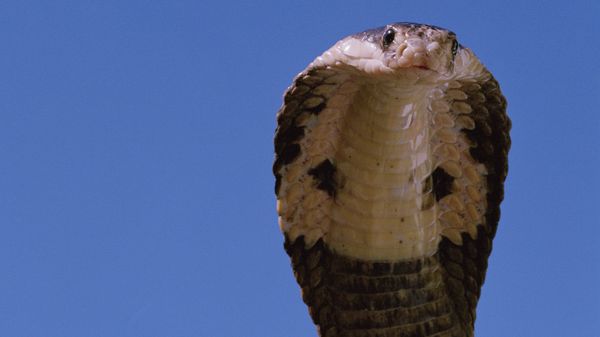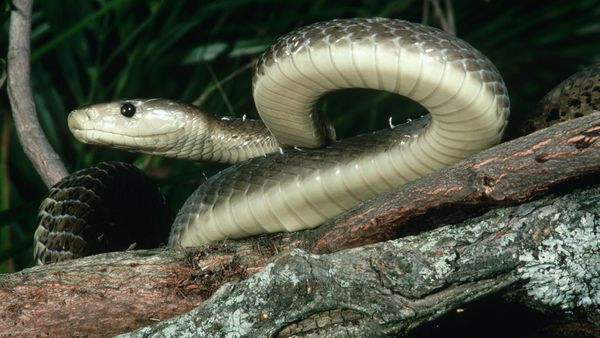King browns are vulnerable to various natural predators, particularly in their juvenile stages. Birds of prey, such as eagles and hawks, are significant threats, as they use their aerial advantage to spot and capture young snakes.
Mammalian predators — including dingoes, feral cats and wild pigs — also prey on these mulgas. Their ability to hunt on the ground and in burrows makes them effective predators of young and sometimes adult snakes.
Larger reptiles, including monitor lizards and even other giant snakes, can also be predators of the king brown, especially targeting the juveniles. These reptilian predators are well-adapted to hunting in similar habitats and can pose a considerable threat.
Health Issues
Regarding diseases, these black snakes are susceptible to various health issues. Parasitic infections are common; they can be afflicted by internal parasites like worms, which impact their digestive system, and external parasites such as ticks and mites, which can affect their skin and overall health.
Respiratory infections are a concern, especially in environments with poor ventilation, which can occur in captive situations. Bacterial and fungal skin infections can arise from injuries or unsanitary conditions, leading to further health complications.
In captivity, nutritional deficiencies are a notable issue. An improper diet can lead to metabolic disorders, impacting the snake's growth, immune system, and overall health.
Stress-related diseases are also a concern in captive snakes, caused by improper handling, inadequate enclosure conditions and exposure to extreme temperatures.
This article was written in conjunction with AI technology, then fact-checked and edited by a HowStuffWorks editor.



